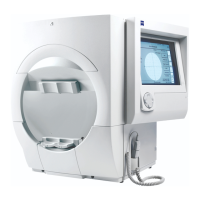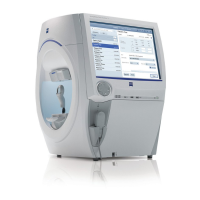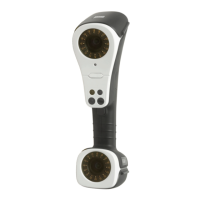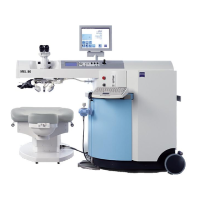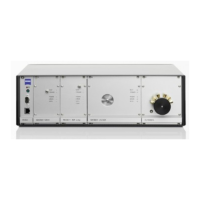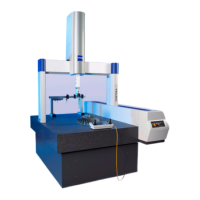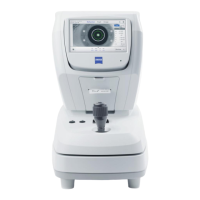Test Reliability
Humphrey Field Analyzer II-
i
series User Manual 2660021145640 A
6-2
Factors Affecting Reliability
Patient Compliance
The importance of the perimetrist reigns above all other factors affecting test
reliability. This was
true before the advent of automation and still proves to be true with computerized perimetry. The
“human factor,” that is, the interaction between the perimetrist and the patient, cannot be
overlooked when discussing test reliability.
It is the perimetrist’s job to promote patient cooperation and to motivate the patient to put forth his
or her best
effort.
Tips for achieving patient compliance:
• Create the proper environment.
Do not position the perimeter in a noisy or busy
location where the patient can easily be dis-
tracted while listening to test instructions or while taking t
he visual field test. Keep the room
temperature cool so the patient is less likely to become drowsy.
• Foster a relaxed atmosphere.
Vision tests sometimes make patients anxious, especially if it is a new
experience. Allow
patients time to relax, use the rest room, or drink water prior to beginning the test.
• Seat the patient comfortably.
Use an adjustable office chair (with or without
arms) to accommodate tall and short patients.
The perimeter and table will accommodate a full-size office chair with arms or a wheelchair. Be
sure to adjust the table height and, if available, slide the instrument toward the patient to best
meet comfort demands. The patient should be sitting comfortably erect, and not leaning for-
ward excessively.
• Give clear test instructions.
Consider the possibility that the patient may not hear well. In such cases, face the patien
t
while explaining the test procedure so that he or she can benefit from lip reading and gestures.
Avoid giving instructions while the patient is wearing an eye patch.
Emphasize that it is normal and expected that many stimuli will
not be seen. Threshold tests
are designed such that fewer than 50% of the stimuli presented will be seen.
• Keep the patient motivated during the test.
Pause the test, as necessary, to allow the patien
t ample rest time. Encourage the patient fre-
quently and assure them, by using verbal confirmations, that they ar
e doing a good job (e.g.
“You’re doing fine” or “Keep up the good work”).
Unless the patient has a proven record for reliability
, don’t abandon them during testing, espe-
cially during the first few minutes. Correcting
a problem immediately may prevent having to
repeat an entire test.
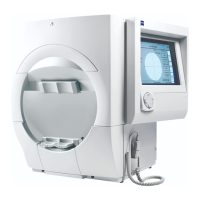
